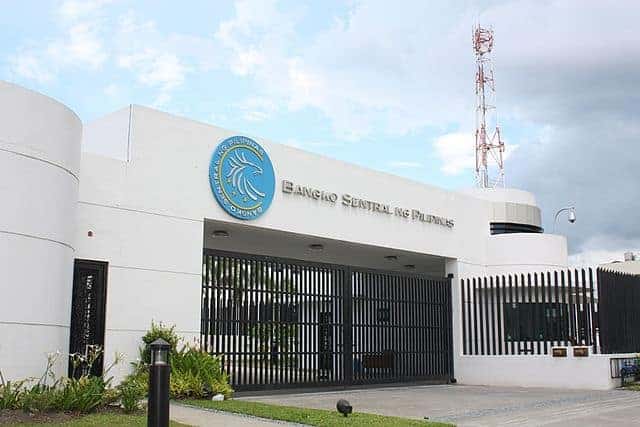In this issue
- Bitcoin riding high again
- Bangko Sentral ng Pilipinas (BSP) joins global CBDC race
- Cardano’s Shelley mainnet goes live after hard fork
- In China: central authority imposes standards for blockchain companies; Huobi launches digital asset custody business
- Funding highlight this week: Turkey and the Middle East
From the Editor’s Desk
Dear Reader,
We have liftoff. But not for the reasons you think.
Sure. The price of bitcoin has turned skyward, going north of the US$10K per bitcoin mark once again. But when, once upon a time it was speculation and hype that drove the price of a single bitcoin to just a few hundred dollars short of the US$20K level, this time, there is serious money that is taking a stake, and making a bet. Institutional investors are looking at the world economy and capital markets in shambles. They may not necessarily feel good about the (in)ability of central banks to apply last decade’s monetary policies to stabilize the economy and their nation’s fiat. And they’re coming in waves, and taking cryptocurrency bets seriously. It’s a trend we noted a year ago, and it is gaining momentum. Fundamentals are starting to take shape and support the market. This is the beginning of liftoff.
The developments in blockchain we’ve put together for you in this latest issue of The Current Forkast reinforce the fundamentals. From Cardano’s liftoff as another blockchain protocol introducing proof-of-stake technology to the broader network, to China’s regulatory fist trying to address a domestic issue but also introducing oversight to blockchain technology for an international market. What it all boils down to is that investing in cryptocurrencies or digital assets is not just a speculative bet anymore. Serious money is beginning to see how cryptocurrency can be tied to enterprise growth. It goes hand in hand. The ones that make the greatest case for that will be the future winners. But the reason why bitcoin will likely always hold that important place in people’s portfolios is that it marked the beginning of understanding the value of blockchain-enabled currency. So even though bitcoin doesn’t have enterprise ability, its value is serving as that pipeline from the old economy to the new. And it is getting more crowded every day.
Until the next time,
Angie Lau,
Founder and Editor-in-Chief
1. Bitcoin riding high again

By the numbers: Bitcoin — 5,000% increase in Google search volume.
Bitcoin started the week by cracking US$10,000 for the second time in 2 months, followed by a 12% flash crash within an hour. While prominent investors such as Michael Novogratz expect “liquidity pump” from the CARES Act stimulus packages will drive prices past $14,000 in the next three months, bitcoin transaction fees rise by over 500%.
- Ethereum, which has passed up bitcoin in daily settlement value, is also enjoying a price hike since last week, powered by the rising popularity of DeFi and stablecoins.
- Ethereum celebrated its 5th birthday on July 30.
Forkast.Insights | What does it mean?
Bitcoin’s third halving took place in May, and much to the chagrin of many who predicted astronomically high prices, like $50,000 a bitcoin, it didn’t take off like a rocket. In fact, the opposite happened: it had a slight price correction.
Investors aren’t overly concerned about the supply of bitcoin; they are more interested in the institutional acceptance of cryptocurrency as an asset. And that’s the more important trend this year. First it was the creation of institutional-grade digital asset funds in Hong Kong, attracting some of the smartest capital in Asia. Then it was the recent announcement that U.S. banks would be allowed to act as custodians for digital assets. While Hong Kong has its own framework and was expected to have one given its business-friendly nature, the U.S. was the wild card. But, as many close to the top at various U.S. regulators either now have a positive or friendly outlook toward crypto, it wasn’t entirely unexpected.
Bitcoin finally being accepted as an institutional-grade investment asset is what’s driving value here. As Bitcoin isn’t really an effective means of retail commercial payment, nor is it programmable like Ethereum or other blockchains. Its continued existence is dependent on it being perceived as a store of value. And it seems we are heading in that direction.
2. Bangko Sentral ng Pilipinas

By the numbers: Bangko Sentral ng Pilipinas — 5,000% increase in Google search volume.
The Philippines is entering the CBDC race. Governor Benjamin Diokno of Bangko Sentral ng Pilipinas (BSP), the nation’s central bank, announced that the BSP has created a research committee to examine feasibility and implications of digital currency issuance. The Philippines joins Japan as the latest countries to express interest in developing a national digital currency.
- Earlier this month, the Philippine Bureau of the Treasury (BTr) rolled out a blockchain-powered app, Bonds.PH, to distribute government bonds.
- Crypto exchanges in the Philippines must register with the BSP as remittance and transfer companies. There are currently 16 exchanges that have registered.
Forkast.Insights | What does it mean?
Although the U.S. and China, the world’s two biggest economies, dominate the headlines when it comes to their respective CBDC efforts, there’s also a concerted effort by developing countries to build out CBDCs to improve the liquidity of their currencies. For countries like the Philippines, which is reliant on remittances from migrant workers, building liquidity is key as it brings down fees for transactions. Remittances sent by Filipinos abroad is a $30 billion business. That’s a lot of room for disruption.
The Phillipines’ full-throated approach to blockchain technology is shared by Indonesia, another developing country that is also reliant on remittances. As Forkast.News previously reported, Bank Rakyat Indonesia (Southeast Asia’s 10th biggest by market cap), is investing via its venture arm into an API (application programming interface) that would allow the country’s smaller banks to use Ripple for remittances.
Indonesia is studying the creation of a CBDC as well, but nothing has gotten past the exploration stage. For now, however, the investment in Ripple would be a good case study in the effectiveness of the platform for handling remittances and thus building up liquidity on inward payment pathways. Let’s check back in a few months and see how these two parallel projects have matured.
3. Cardano’s Shelley goes live after hard fork

By the numbers: Shelley — 5,000% increase in Google search volume.
Cardano’s Shelley mainnet is now live after a successful hard fork. The formerly federated consensus system run by the Ouroboros Byzantine Fault Tolerance (OBFT) algorithm is now operating as a fully delegated proof-of-stake (PoS) platform.
- The upgrade allows all ADA holders to participate in staking. ADA holders earn staking rewards by validating blocks in the network or by delegating coins into a stake pool to receive rewards.
- @IOHK_Charles (Cardano founder Charles Hoskinson): “We have reached Orbit. Shelley Hard Fork is Successful. When Shelley? Now!!!!!!!!!! Shelley has fully launched”
Forkast.Insights | What does it mean?
Shelley is the most significant — and long awaited — upgrade to Cardano since the platform’s inception, bringing about new architecture and an entirely new set of functionalities.
Cardano is important because it was one of the first major projects to embrace “proof of stake,” which is much more efficient than power-hungry “proof of work.” This is substantial because Cardano’s Shelley would be a reference customer of significant scale for the technology. It would also prove that a wholly decentralized blockchain of scale is viable and realistic. Right now Ethereum, Bitcoin and other “proof-of-work” chains still have many centralized choke points.
Interest in Cardano is also building because of its use of staking to build out an initial base of token holders. Again, Cardano isn’t the first project to use staking — actively participating in transaction validation in exchange for rewards. But the combination of the general interest in the project and the offer to earn back for being a literal “stakeholder” in it is only building up interest.
Cardano’s next challenge will be to build up its developer community. Right now, IOHK (the foundation behind Cardano) has 29 people working on the GitHub repositories. In contrast, Ethereum’s GitHub has 61 people contributing, giving it an advantage. There’s interest from traders, and once more developers have buy-in, then the project can really take off.
4. In China: top-down standards for blockchain firms; Huobi launches digital asset custody business

The Beijing Certificate Authority has launched a new Blockchain Security Assessment Service to help validate the security robustness of Chinese blockchain companies’ software.
- Approved by CNCA — the Certification and Accreditation Administration of China — the Beijing Certificate Authority is the only one in China qualified to conduct all types of certification and testing in the financial industry.
- The Blockchain Security Assessment Service provided by the Beijing Certificate Authority assesses three parts of a blockchain-based platform or application: basic requirements, performance, and security, which also includes auditing the nodes, ledgers and encryption algorithms used.
- The Blockchain Security Assessment Service is a direct response to People’s Bank of China’s recent calls for establishing industrial norms and regulations to differentiate between the nation’s 35,000 “blockchain” companies, between the legitimately blockchain ones and ones that merely use “blockchain” in their company name or description for marketing purposes without having much to do with blockchain technology.
Forkast.Insights | What does it mean?
As blockchain becomes more ingrained in the software stacks of different applications across a plethora of industries and use cases, some believe there needs to be a third-party security validation service to verify the integrity of keys as well as assess the strength of the platform’s security.
There’s also the fact that many companies that have attached “blockchain” to their name only do so as a form of SEO for investor interest. Indeed, as Forkast.News reported earlier this year, of the 35,000 companies registered in China with “blockchain” in their name or business description, only around 1,000 conduct business that’s directly related to blockchain technology. Without a set of industry standards and some sort of third-party certification, it’s tough to distinguish between companies that are actually blockchain-related, and firms just looking to capitalize on a trend.
The elephant in the room is the issue of encryption, something that Beijing Certificate Authority specializes in, because of local laws that require software vendors that use encryption to use a made-in-China encryption technology and have the keys registered with Beijing. This is an incredibly contentious issue, and has caused the BSN project to fork into an international version and a domestic version. It’s also why enterprise-focused Hyperledger is working on a government-approved “refined” version of its fabric with a China-developed encryption protocol for use inside the country. It’s not hard to guess that one of the priorities in the Beijing Certificate Authority’s assessment process will be ensuring that government-approved encryption keys are used — all to protect the platform’s data and ensure that malevolent actors don’t have access.

Singapore based Huobi, the world’s second largest cryptocurrency exchange by volume, has launched its digital asset custody business, Huobi Vice President Ciara Sun announced on twitter recently.
- Huobi Asset Management targets “pro users” — accredited investors and institutions that have a tolerable risk profile according to Huobi’s internal metrics (which, for individuals means holding not less than 30 BTC-equivalent in crypto assets and for institutions, not less than 50 BTC-equivalent) — to subscribe to various token offering from Huibo’s listed partners.
- For the four projects currently on Huobi’s platform, only USDT and BTC are supported as the main currencies. The minimum subscription amount is set at 100,000 USDT or 10 BTC — or about US$112,550.
Forkast.Insights | What does it mean?
As the crypto custody industry matures, with it comes demand for institutional-grade investment products. Huobi, as one the world’s largest exchanges, is capitalizing on this trend with their offering.
As Ciara Sun, head of global markets at Huobi Group, said in a recent interview: “2020 will be an exciting year for the institutional market as compliance and regulation matures.” All signs are pointing to this being the case. With regulators in the U.S. and Hong Kong greenlighting custody and institutional asset management, the industry is only going to expand as investors seek a new asset class and the tokenization of traditional commodities begins to take off. Other exchanges will likely follow suit and begin to build their offerings in this space as this becomes a trend.
5. Funding spotlight this week: Turkey
MenaPay — venture, Turkey, undisclosed
Turkey-based blockchain startup MenaPay announced a funding round from digital asset VC firm CoinShares Ventures. In a news release, CoinShares Ventures stated that the funding round will go toward expanding MenaPay’s presence in the Middle East, as the company already maintains an office in the UAE. The firm strives to become a “SuperApp” via a digital payment system to rival the “streamlined, simple and relatively cheap” interbank transfers of the Turkish economy. While applications such as WeChat in China have ascertained broad appeal, the Arab market has seen competition for hegemony from Careem, a ridesharing service provider.
Forkast.Insights | What does it mean?
Despite Covid-19’s chilling effect on venture capital, startups that promise to disrupt the payment sector seemingly can raise any round they are after. The hotspot for challenger banks is emerging markets, and Turkey with its vast population and rising incomes is a great example of a potential new market. Turkey isn’t as dependent on remittances as countries like Indonesia or the Philippines; it has a banking system that can be disrupted and rebuilt from the ground up as the country matures. Expect more firms like this to close their funding rounds in the near future.




